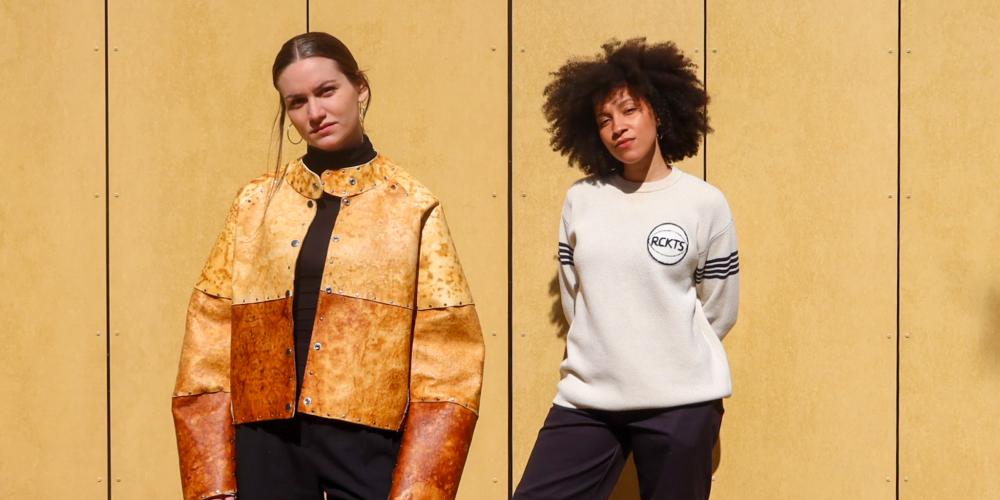
After the groundbreaking creation of the first bio-based handbag made from mycelium leather, the Microbiology research group at Vrije Universiteit Brussel (VUB) expands their research on mycelium-based materials into new product categories. Led by Prof. Eveline Peeters and Prof. Elise Vanden Elsacker, the team explores mycelium, the root structure of fungi, as viable alternative to animal and synthetic leather.
PhD researchers and designers Annah-Ololade Sangosanya and Anouk Verstuyft debut their individual work at Isola Design Festival during Milan Design Week 2025, showcasing the power of interdisciplinary research. By connecting scientific research with design, they highlight mycelium’s potential as an innovative and sustainable material on an international stage.
“As the field of biofabrication evolves, we are gradually redefining what it means to design products,” explains Prof. Elise Vanden Elsacker. “In our lab, we work in collaboration with living organisms to create materials that challenge traditional notions of matter. By working with fungi and their natural ability to grow structures, we can create materials that are shaped by life itself. In this process, design isn’t something that is done at the end, but it’s intrinsic to the way these materials grow from the very start, as you can see in the work of Annah and Anouk.”
Presenting "Macro Fungal Skins," Annah-Ololade Sangosanya developed a mycelium jacket, proving that mycelium-based textiles can be scaled up to complex fashion products. While previous experiments focused on smaller accessories such as handbags, this creation demonstrates that the material is suitable for larger, durable garments. "This process illustrates what we call ‘Research through Design,’" Sangosanya explains. "Science and design seamlessly merge here. We are not only developing new materials but also innovating research methodologies." “I’m fascinated by the versatility of fungi to grow unique patterns and textures,” Sangosanya continues. “With this material, we can additionally explore the colors landscape without the use of dyes. Each piece of the jacket represents a different treatment, no two are ever exactly the same. It challenges the uniformity of today’s fashion industry and invites us to imagine a more intentional way of creating unique clothes.”
Taking mycelium materials into the interior design realm, Anouk Verstuyft designed the three-piece furniture collection "Fungal Functions." In her work Mycelium is not only shown as functional and sustainable material but explores its aesthetic qualities. “Unlike materials such as wood, ceramics, or metal, which have developed strong cultural heritage, the perception and acceptance of mycelium as a material is still being shaped,” Verstuyft explains. “With this collection, I aim to demonstrate the functional qualities of mycelium while also contributing to a positive perception of this novel material.”
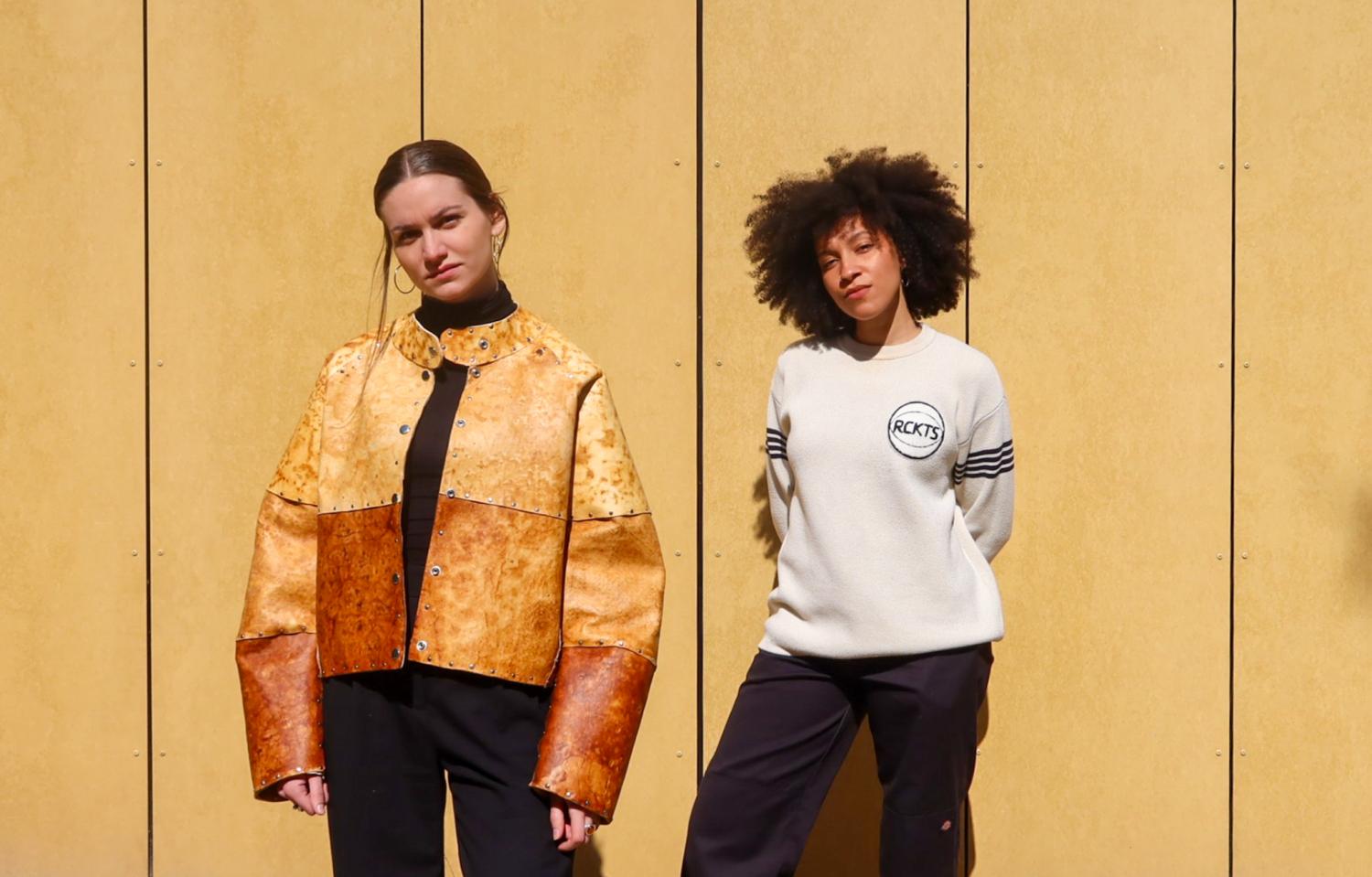
Mycelium leather jacket “Macro Fungal Skins” by Annah-Ololade Sangosanya (right) © Annah-Ololade Sangosanya
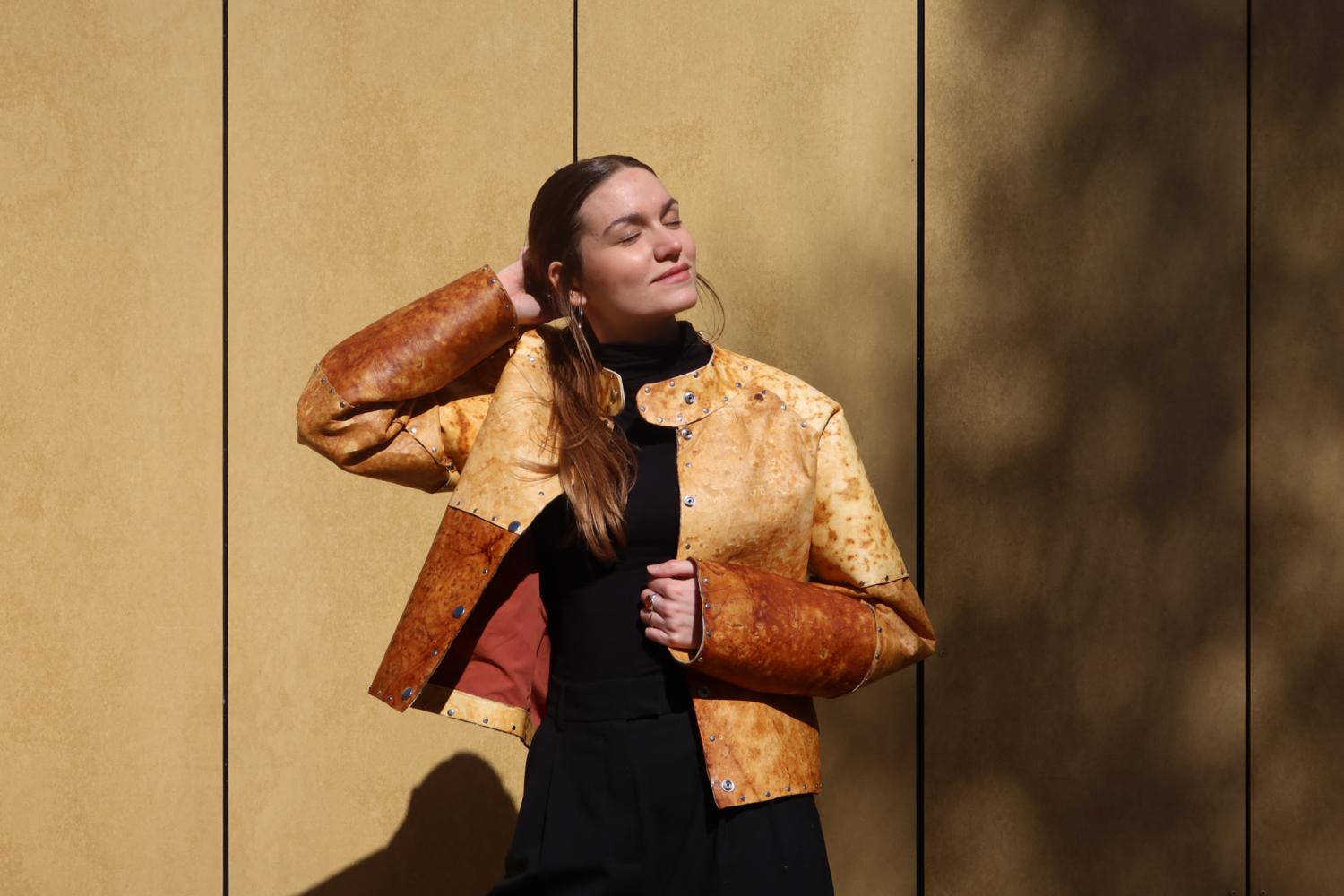
Mycelium leather jacket "Macro Fungal Skins" by Annah-Ololade Sangosanya © Annah-Ololade Sangosanya
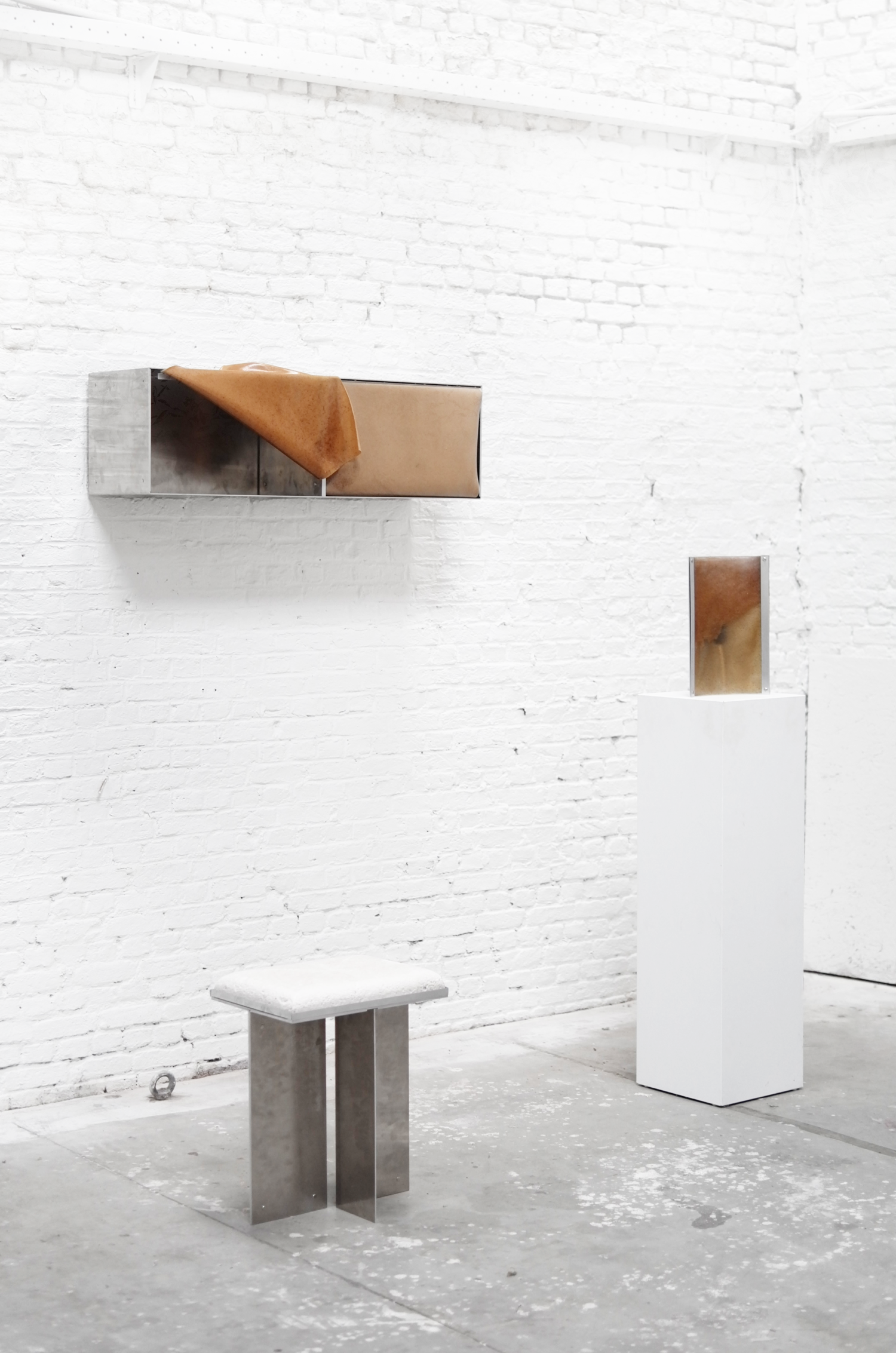
“Fungal Functions”, aluminum collectibles each featuring a unique fungal material © Anouk Verstuyft
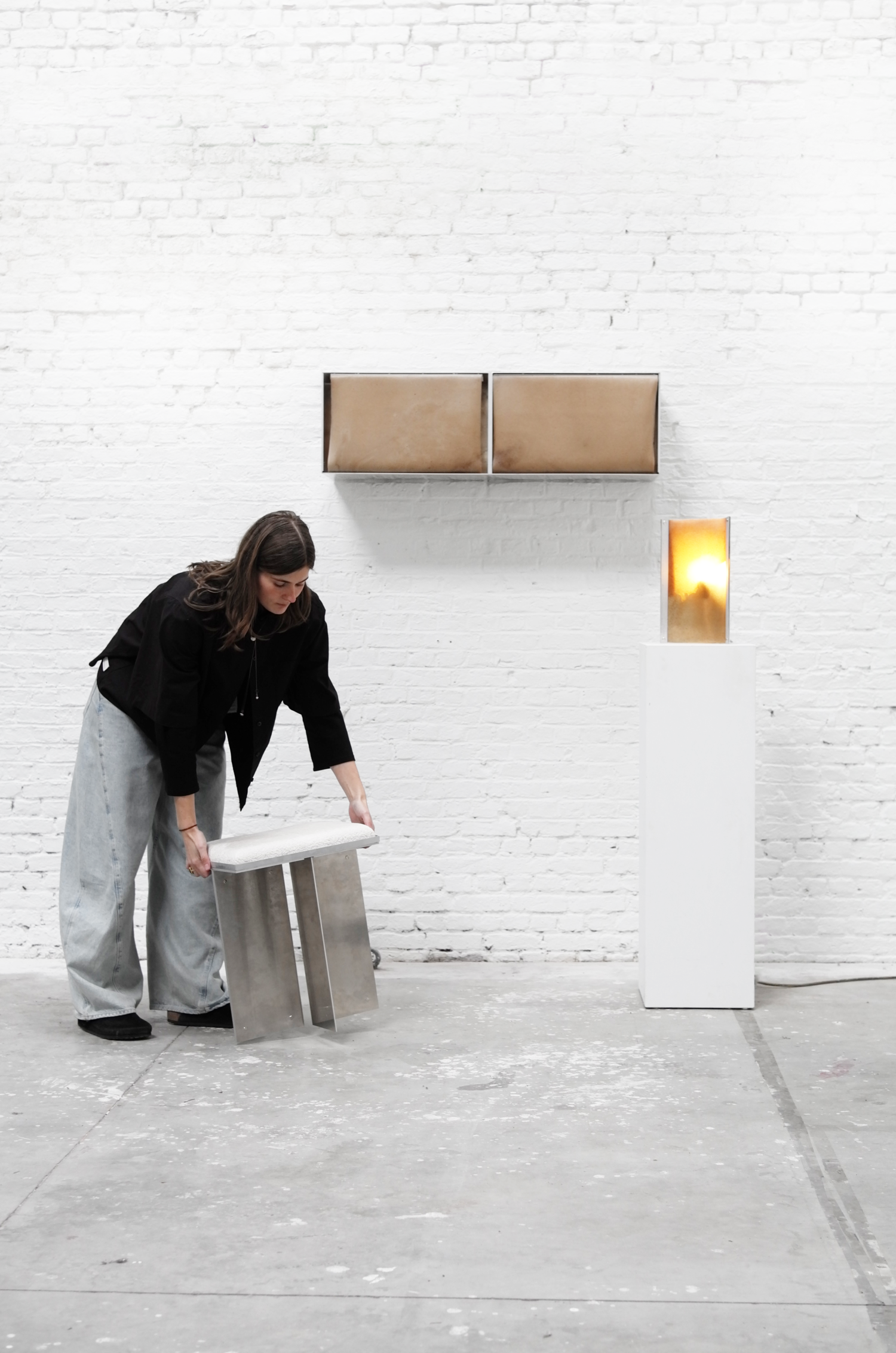
“Fungal Functions”, a series of fungal material collectibles designed by Anouk Verstuyft © Anouk Verstuyft
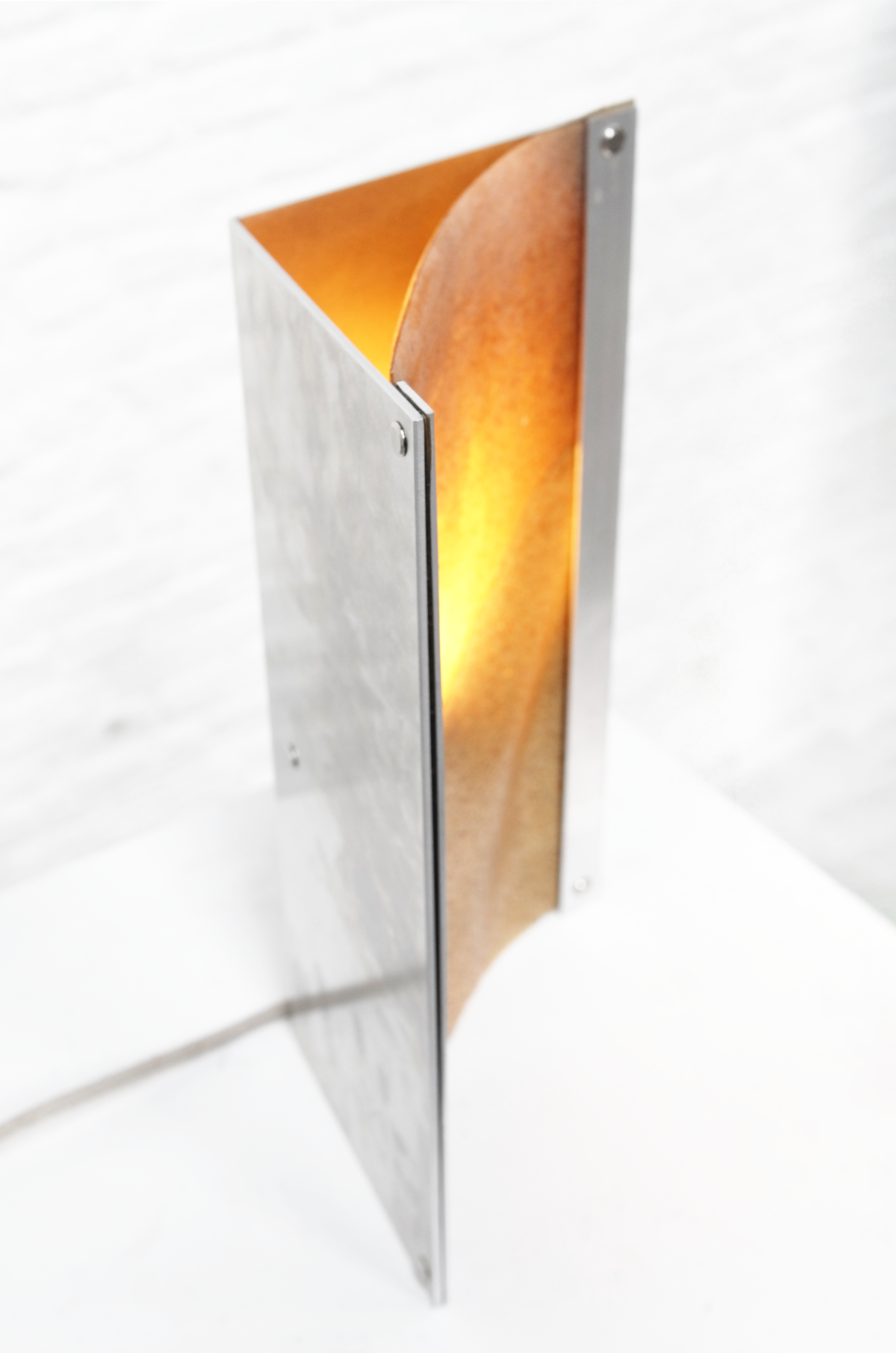
Lamp part of the collection “Fungal Functions”, featuring a fungal material grown on dye-contaminated wastewater © Anouk Verstuyf
Mycelium is a new frontier of material innovation. It can grow on a wide range of organic waste and by-product streams "We experimented with waste streams from the agricultural and textile industries, such as textile waste and dye-contaminated wastewater. This toxic wastewater is transformed by fungi into non-harmful products. Mycelium thus offers not only an ecological alternative to traditional materials but can also contribute to environmental remediation."
Anouk’s and Annah-Ololade’s research is part of the MycoMatters project, funded by FWO Vlaanderen. In collaboration with external university partners (UGent, UA and Maastricht University), the VUB team is working on robust processes for producing 100% bio-based and biodegradable materials. The prototypes shown at Isola Design Festival contribute to the future of new value chains for fully bio-based and biodegradable materials aligned with the principles of the circular economy.
More info:
MycoMatters Project:
Milan Design Week 2025:
Contact:
Prof. Dr. Eveline Peeters: Eveline.Peeters@vub.be
Prof. Dr. Elise Vanden Elsacker: Elise.Vanden.Elsacker@vub.be
Annah-Ololade Sangosanya: Annahololade.Sangosanya@vub.be
Anouk Verstuyft: Anouk.Verstuyft@vub.be
Research dissemination & valorization officer Lars Dittrich: Lars.Dittrich@vub.be
Tel. nrs. available on demand